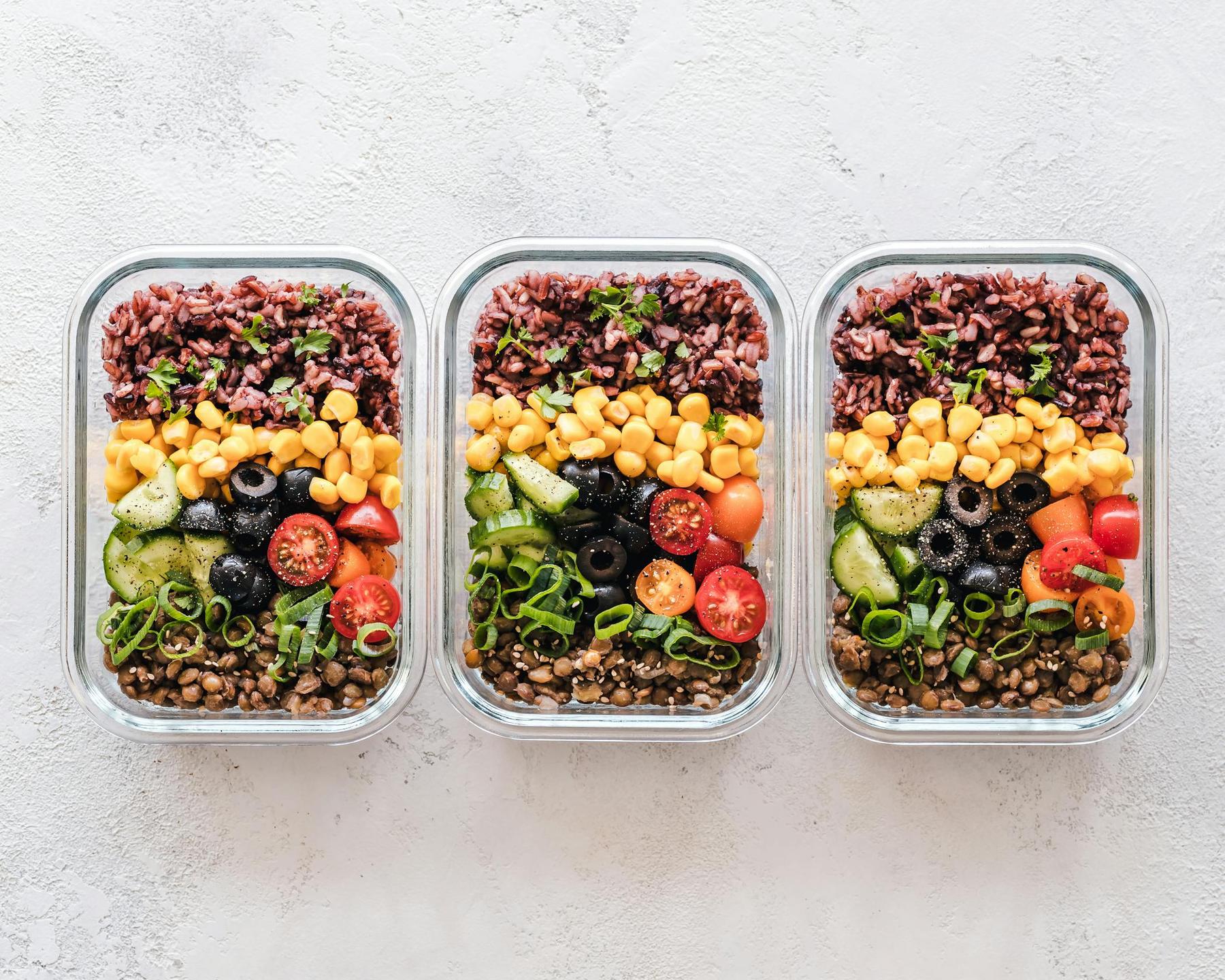In the quest for effective weight management, the kitchen stands as perhaps the most powerful tool at your disposal. While many focus exclusively on what they eat, how food is prepared can be equally influential in determining weight loss outcomes. Modern research demonstrates that cooking methods directly impact not only calorie content but also nutrient preservation, satiety levels, and long-term dietary adherence—all critical factors in sustainable weight management.
For Australians navigating weight loss in 2025, understanding and implementing evidence-based cooking techniques offers a practical approach to reducing caloric intake without sacrificing flavour or satisfaction. The transformation of ingredients through thoughtful preparation creates an opportunity to reconcile nutritional goals with culinary enjoyment, addressing one of the most significant barriers to weight loss success.
What Makes Cooking Techniques Important for Weight Loss?
The connection between cooking methods and weight management extends beyond simple calorie reduction. Research indicates that specific preparation techniques fundamentally alter how foods affect metabolic processes, nutrient absorption, and appetite regulation.
When ingredients are cooked using methods that preserve their natural structures and nutritional profiles, they typically promote greater satiety while delivering fewer calories. This advantageous combination creates the foundation for sustainable weight loss without triggering the compensatory hunger responses that often derail progress.
Additionally, cooking techniques that minimise added fats while maximising flavour through herbs, spices, and natural cooking processes help establish new taste preferences that support long-term dietary changes. Research published in 2022 demonstrates that hands-on cooking as part of weight management programs leads to 7.3% greater weight loss compared to passive approaches, highlighting the behavioural benefits of engaging directly with food preparation.
Which Cooking Methods Best Support Weight Management?
The evidence clearly indicates that certain cooking techniques consistently outperform others for weight management purposes. These methods typically share key characteristics:
- They require minimal added fats or oils
- They preserve nutritional integrity of ingredients
- They enhance natural flavours without relying on calorie-dense additions
- They support proper portion control through preparation style
Based on these criteria, several cooking approaches emerge as particularly beneficial:
| Method | Primary Benefit | Calorie Impact | Best For |
|---|---|---|---|
| Steaming | Preserves water-soluble vitamins | No added fats required | Vegetables, fish, dumplings |
| Grilling | Allows fat to drain away | Reduces natural fat content | Lean meats, vegetables |
| Poaching | Gentle cooking without oil | Zero added fat | Chicken, fish, eggs |
| Roasting | Even cooking with minimal oil | Can be adjusted for fat content | Root vegetables, lean meats |
| Air frying | Crispy texture with minimal oil | Up to 80% less oil than deep frying | Foods traditionally fried |
These techniques share the fundamental benefit of creating satisfying meals while naturally limiting caloric density—a crucial factor for those managing their weight while maintaining dietary satisfaction.
How Can Water-Based Cooking Methods Aid Weight Loss?
Water-based cooking techniques represent some of the most effective approaches for creating nutritious, calorie-conscious meals that support weight management goals.
Steaming: The Nutrient Preserver
Steaming stands out as perhaps the most valuable water-based technique for weight control. This method excels at preserving water-soluble vitamins (particularly vitamin C and B vitamins) that are often lost during other cooking processes. Research indicates that steamed vegetables retain significantly more nutrients than their boiled counterparts, providing greater nutritional value per calorie consumed.
From a weight management perspective, steaming’s key advantage lies in its complete elimination of added fats while maintaining food volume and satisfaction factors. Steamed vegetables, fish, and even some grains maintain their structural integrity, promoting greater satiety through slower digestion and maintained fibre content.
Poaching: Gentle Protein Preparation
Poaching provides an excellent alternative for preparing proteins without additional fats. This gentle simmering in liquid (water, broth, or milk) creates tender, moist results while avoiding the calorie density that comes with oil-based methods.
For weight management purposes, poaching offers particular benefits when preparing:
- Chicken breast (resulting in tender, succulent meat without dryness)
- Fish fillets (preserving delicate textures without added fats)
- Eggs (creating versatile protein options without the additional calories of frying)
The temperature control inherent in poaching also helps prevent the formation of potentially harmful compounds that can develop during high-heat cooking methods, adding a health-protective dimension beyond simple calorie management.
How Do Dry-Heat Cooking Methods Contribute to Weight Management?
Dry-heat techniques offer distinct advantages for weight management when properly executed, often enhancing flavour profiles while minimising added fats.
Grilling and Barbecuing: Fat-Reducing Favourites
Grilling represents a particularly effective cooking approach for weight management as it allows natural fats to drain away from foods during the cooking process. This natural fat reduction occurs without sacrificing moisture or flavour, especially when foods are properly prepared and monitored.
Research shows that grilled meats typically contain significantly lower fat content compared to the same cuts prepared through pan-frying or other oil-based methods. For Australians embracing outdoor cooking traditions, this provides a culturally relevant weight management strategy that aligns with established preferences.
Important health note: To maximise the benefits of grilling while minimising potential health concerns, avoid charring meats and consider using marinades containing acid-based ingredients (like lemon juice or vinegar), which research shows can reduce the formation of potentially harmful compounds during high-heat cooking.
Roasting and Baking: Versatile Oven Techniques
Oven-based methods offer exceptional versatility for weight-conscious cooking, requiring minimal added fats while developing complex flavours through caramelisation and browning reactions.
For optimal weight management results when roasting:
- Use racks within roasting pans to allow fats to drain away from meats
- Consider parchment paper instead of oil for non-stick results
- Embrace vegetable-forward roasting with minimal oil (just 1-2 teaspoons for an entire tray)
- Utilise herbs, spices, and citrus to enhance flavour without adding calories
These approaches transform traditional roasting from a potentially calorie-dense method into one that actively supports weight management goals through fat reduction and flavour enhancement.
What Food Preparation Strategies Enhance Weight Loss Results?
Beyond specific cooking methods, several preparation strategies significantly impact the caloric content and nutritional value of meals.
Strategic Vegetable Preparation
Research indicates that how vegetables are prepared before cooking directly influences their calorie absorption and satiety potential:
- Larger vegetable pieces absorb less oil during cooking compared to finely chopped options
- Retaining edible vegetable and fruit skins increases fibre content, promoting fullness
- Batch preparation of vegetables increases their inclusion in meals throughout the week
These seemingly minor adjustments create meaningful differences in overall calorie consumption while enhancing the nutritional density of meals—a critical factor for maintaining energy levels during caloric restriction.
Flavour Enhancement Without Calories
Developing sophisticated flavour profiles without additional calories represents a cornerstone of successful weight management cooking. Research demonstrates that adequately seasoned foods promote greater satisfaction with smaller portions, directly supporting calorie control.
Effective flavour-building strategies include:
- Using fresh herbs like rosemary, basil, and coriander to add aromatic complexity
- Incorporating spices such as black pepper, turmeric, and cumin for depth and warmth
- Employing acid components (lemon juice, vinegars) to brighten flavours and reduce the need for salt
- Utilising umami-rich ingredients (mushrooms, tomatoes, soy) to enhance perception of richness without added fats
How Can Meal Planning with Healthy Cooking Techniques Support Long-Term Success?
The integration of healthy cooking techniques into structured meal planning creates a powerful framework for sustainable weight management. Research published in the Cambridge Journal of Public Health Nutrition demonstrates that frequent home cooking correlates with lower calorie intake, reduced fast-food consumption, and improved overall diet quality—regardless of whether weight loss is an explicit goal.
This connection between cooking engagement and improved dietary patterns suggests that mastering healthy preparation techniques serves as both a practical skill and a behavioural intervention. By developing competence with methods like steaming, grilling, and strategic flavouring, individuals naturally shift toward more consistent dietary patterns that support weight management.
Effective meal planning leveraging these cooking techniques typically includes:
- Batch preparation of proteins using methods like poaching or roasting
- Strategic vegetable preparation emphasising variety and volume
- Thoughtful incorporation of complex carbohydrates in appropriate portions
- Development of versatile, low-calorie flavour profiles that prevent meal fatigue
This structured approach transforms cooking from a potential barrier to an active facilitator of weight management success, creating sustainable patterns rather than temporary restrictions.
The Integrated Approach to Cooking for Weight Management
The most successful approach to cooking for weight management integrates multiple evidence-based techniques within a practical framework that acknowledges real-world constraints and preferences. Rather than focusing on a single “perfect” method, research supports developing competence across a range of techniques that can be applied contextually.
This integrated approach recognises that sustainable weight management depends not just on calorie reduction but on the development of a positive, engaging relationship with food preparation that supports long-term behavioural change. By mastering techniques that naturally reduce caloric density while maximising flavour, individuals create the foundation for eating patterns that support weight management without triggering the deprivation responses that often lead to dietary abandonment.
For Australians navigating weight management in 2025, these evidence-based cooking techniques offer a practical pathway to transforming daily meals into active contributors to health objectives, creating a sustainable approach to weight management through the powerful medium of the kitchen.
Which cooking method is most effective for weight loss?
Steaming consistently ranks as one of the most effective cooking methods for weight management. This technique requires no added fats, preserves water-soluble vitamins, maintains food volume, and supports satiety—all critical factors for sustainable weight loss. Research indicates that regularly incorporating steamed vegetables and proteins into meals correlates with improved weight management outcomes compared to oil-based cooking methods.
Does cooking technique actually impact weight loss results?
Yes, cooking techniques directly influence weight loss results through multiple mechanisms. Studies demonstrate that methods like grilling and steaming can reduce the caloric content of meals by 20-30% compared to frying or sautéing the same ingredients. Additionally, certain cooking methods preserve more fiber and structural integrity, promoting greater satiety from the same food volume.
How can I make healthy cooking more flavourful for weight loss?
Developing flavour without additional calories requires strategic ingredient selection and preparation. Research shows that layering aromatic vegetables, fresh herbs, spices, and acid components like lemon juice or vinegar creates complex flavour profiles that satisfy the palate without adding extra calories. Techniques such as dry toasting spices and reducing liquids to concentrate flavours also help in creating satisfying meals.
How important is portion control when using healthy cooking techniques?
While healthy cooking techniques naturally reduce caloric density, portion awareness remains crucial for weight management. Even nutrient-dense and properly prepared foods can contribute to a caloric surplus if consumed in large amounts. Employing portion control strategies like using smaller plates, pre-portioning proteins, and increasing the volume of vegetables can help maximise the benefits of these cooking methods.
Can slow cooking methods support weight loss goals?
Yes, slow cooking methods such as braising and using slow cookers offer advantages for weight management. They excel at developing rich flavours in lean proteins and tougher cuts of meat without requiring additional fats. Slow cooking also supports batch preparation and meal planning, which research associates with improved dietary adherence and greater satiety.



